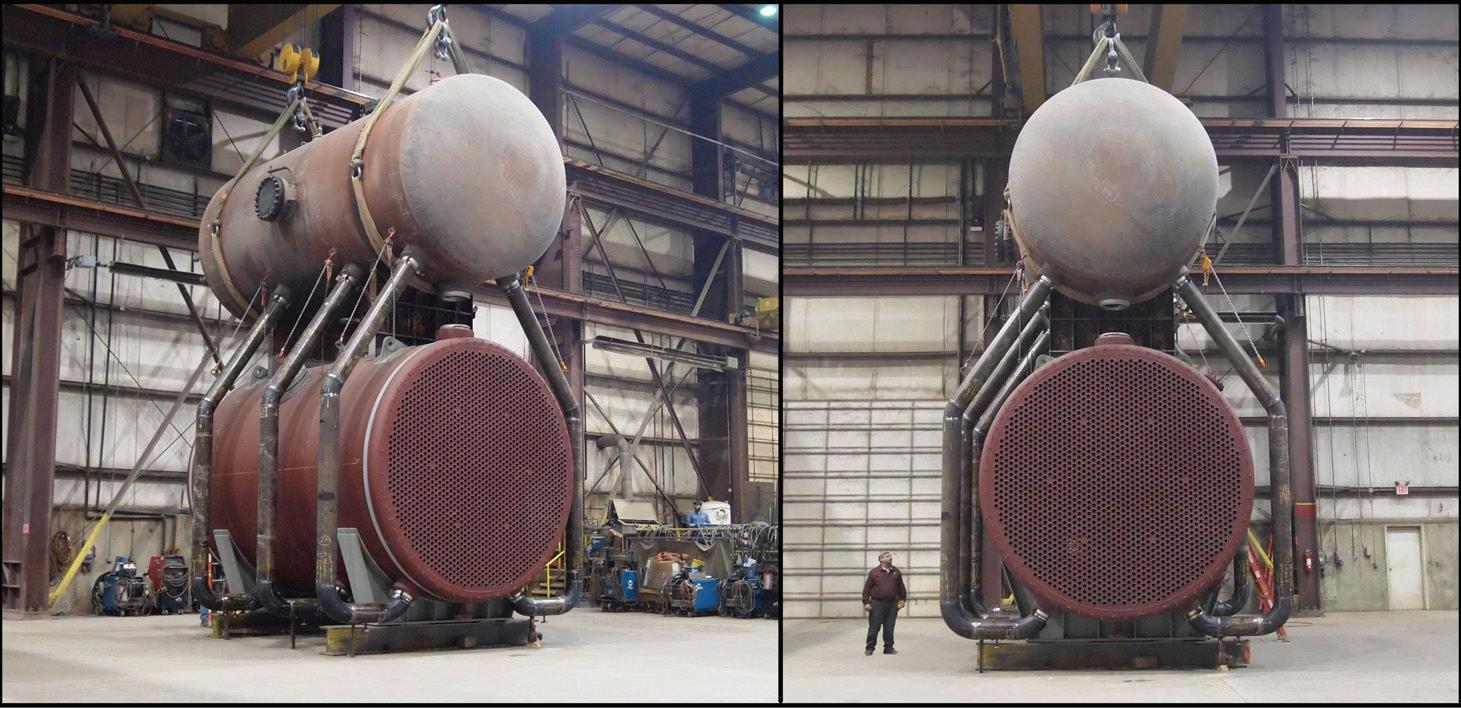
18 minute read
Absent friends—In memoriam
novel, cost-effective process to capture ambient carbon dioxide while producing sulfuric acid. The process should, the company says, enable carbon-negative critical element extraction and fertilizer production.
In June Travertine announced a $3 million seed financing jointly led by Grantham Environmental Trust and Clean Energy Ventures to enable the company to scale up its team in Colorado and accelerate pilot implementation in 2023.
Carbon dioxide removal has widely been acknowledged as a key piece in the climate change puzzle, with the IPCC believing it must be scaled concurrently with decarbonisation to achieve the goals from the Paris Climate Accord.
Travertine’s electrochemical process mineralizes CO2 from the air and co-produces sulfuric acid used for extracting raw materials such as lithium, nickel and cobalt. It accelerates the Earth’s natural carbon cycle to precipitate carbonate minerals from carbon dioxide in the air – producing sulfuric acid, green hydrogen for renewable energy and oxygen as a by-product – and permanently storing carbon in the solid phase, according to Travertine.
Travertine Founder and CEO, a former University of California, Berkeley Professor, Laura Lammers, said, “For every tonne of sulfuric acid produced, half a tonne of CO2 is saved and sequestered.”
Lammers, one of the leading scientists in carbonate mineralization, says Travertine is engaging with companies looking to expand or bring online new production of energy minerals such as lithium that would typically go down the normal sulfuric acid plant route, telling them Travertine can provide another option.
“In addition to that, there are many tonnes of sulphate waste out there that come with recycling options using the technology,” she said. If the technology proves successful in these applications, it could prevent the accumulation of millions of tonnes of waste annually that contaminate water and are deemed as liabilities for mining companies.
And there are also options to bolt-on the technology for retrofits/upgrades in existing sulfuric acid processes, she added. To this point, the company is working with mining companies to trial this technology, with Lammers hoping to say more about these partnerships next year.
She concluded: “There are a number of companies looking at the carbon-to-value landscape, but we are focused on redressing the needs of the industry and the environmental balance.”
For more information, please visit www.travertinetech.com. q
Dr Alfred Guenkel 1943-2022 Nitzan Moshe 1968-2022 Anat Tal-Ktalav 1969-2022
Dr. Alfred Alexander Guenkel
Dr. Guenkel was a 33-veteran of NORAM and renowned for his role in the development of the adiabatic nitration technology used in mononitrobenzene production. Dr. Guenkel also led capstone projects in sulfuric acid and wastewater during the growth of the NORAM Group.
At a recent gathering, colleagues and friends remembered Dr. Guenkel as a man who left an indelible mark on technology, on the engineering community, and on the many young technologists he mentored over three decades at the company. Colleagues past and present expressed how deeply Dr. Guenkel’s absence is felt in the NORAM family and the sulfuric acid technology community as a whole.
Nitzan Moshe & Anat Tal-Ktalav Anat Tal-Ktalav and Nitzan Moshe, both members of ICL’s leadership team, died unexpectedly in a car accident earlier this year.
Nitzan Moshe was Executive Vice President of ICL Operations and known for his deep connection to ICL production sites’ continuous improvement and leadership in sustainability strategy. He is remembered for inspiring others with his sensitivity and dedication.
Anat Tal-Ktalav was ICL’s President Industrial Products Division and known for her dedication to the company and its future growth. She was ICL’s first-ever female division head and is remembered as a model and inspiring leader.
With over two decades at ICL, Tal-Ktalav and Moshe are recognized as top performers who made enormous contributions to the company’s success. Their presence will always be a part of the company’s legacy. q



Op�mus delivered its rst sulfuric acid plant waste heat recovery system in 1996. Across the power and process industries, we’ve produced more heat recovery boilers, HRSGs, superheaters, and economizers than any ac�ve company in the USA. Op�mus and its Chanute Manufacturing plant have a long‐standing rep‐uta�on for high‐quality workmanship and on‐�me performance. Cus‐tomers trust our unique manufacturing exper�se and have condence in our quality control and comprehensive project execu�on.
50 years of manufacturing experience 99% life�me on‐�me delivery performance 20 years experience in Sulfuric Acid waste heat recovery equipment
Ph: 918‐491‐9191 www.op�mus‐tulsa.com Email: info@op�mus‐tulsa.com
Ecoservices performs novel converter repair
By: April Smith, Editor, Sulfuric Acid Today
Ecoservices’ Dominguez plant in Carson, CA, recently replaced its converter’s internal heat exchanger in a meticulously choreographed shutdown spanning 22 days in April 2022. Like many large construction projects, the replacement involved numerous moving parts. But a unique circumstance raised the complexity for the Dominguez plant—lack of precedent. Very few internal exchanger replacements have been performed in the industry.
For thirty years, the Dominguez plant has relied on its internal heat exchanger for its spent acid regeneration operation. Designed and built from 304 H stainless steel by long-time supplier Chemetics, the exchanger withstood three decades of highly destructive conditions: corrosive gases and extremely high temperatures.
However, in 2020 when SO2 to SO3 conversion began to decrease, high-temperature sulfidation, a type of corrosion, was suspected. In February 2021 VIP International was called in for inspection and repairs. The visual inspection revealed the critical damage. “We found over 200 complete failures of tubes and severe delamination of many other tubes,” said Gavin Floyd, Engineering Manager at Ecoservices. “This is the typical failure scenario when 304 H stainless steel is subjected to temperatures above 1,000 degrees F.” While temporary repairs produced minor improvement it was deemed the exchanger had seen its useful life.
High temperature sulfidation is a largely diffusion controlled, high temperature, chemical corrosion process that gradually converts the stainless steel tube metal into various sulfides, sulfates, and oxides that crumble away. “The process is very slow for most industrial applications,” said Jesse Huebsch, Acid Technology Service Engineer at Chemetics. “But higher temperatures and more oxidizing gases, including NOx, intensify and accelerate the deterioration, as do multiple thermal cycles, which cause the scale to flake off.” These were the conditions at Dominguez.
Soon after the inspection, Ecoservices and Chemetics personnel, along with a contingent of varied-skilled contractors, began testing their mettle being among the first to reoutfit a converter’s innards with a brand new heat exchanger.
About Ecoservices
Headquartered in The Woodlands, TX, Ecoservices recycles spent sulfuric acid for use by fuel refiners in the production of alkylate. Alkylate is a fuel blending component that helps increase fuel efficiency and reduce emissions. Each year, the company generates approximately 3.2 million tons of sulfuric acid. The company also produces specialty-grade highpurity virgin sulfuric acid for a number of uses including copper mining for electronics applications, production of lead acid batteries for all types of vehicles, water treatment, and agricultural products. Ecoservices operates seven sulfuric acid regeneration units in California, Indiana, Louisiana and on the Gulf Coast in Texas. Ecoservices is owned by Ecovyst Inc., a global provider of specialty catalysts and services. Ecovyst’s other business, Catalyst Technologies, provides finished silica catalysts and catalyst supports necessary to produce high strength plastics. A joint venture, Zeolyst, supplies zeolites used for catalysts that remove nitric oxide from diesel engine emissions as well as sulfur from fuels during the refining process.
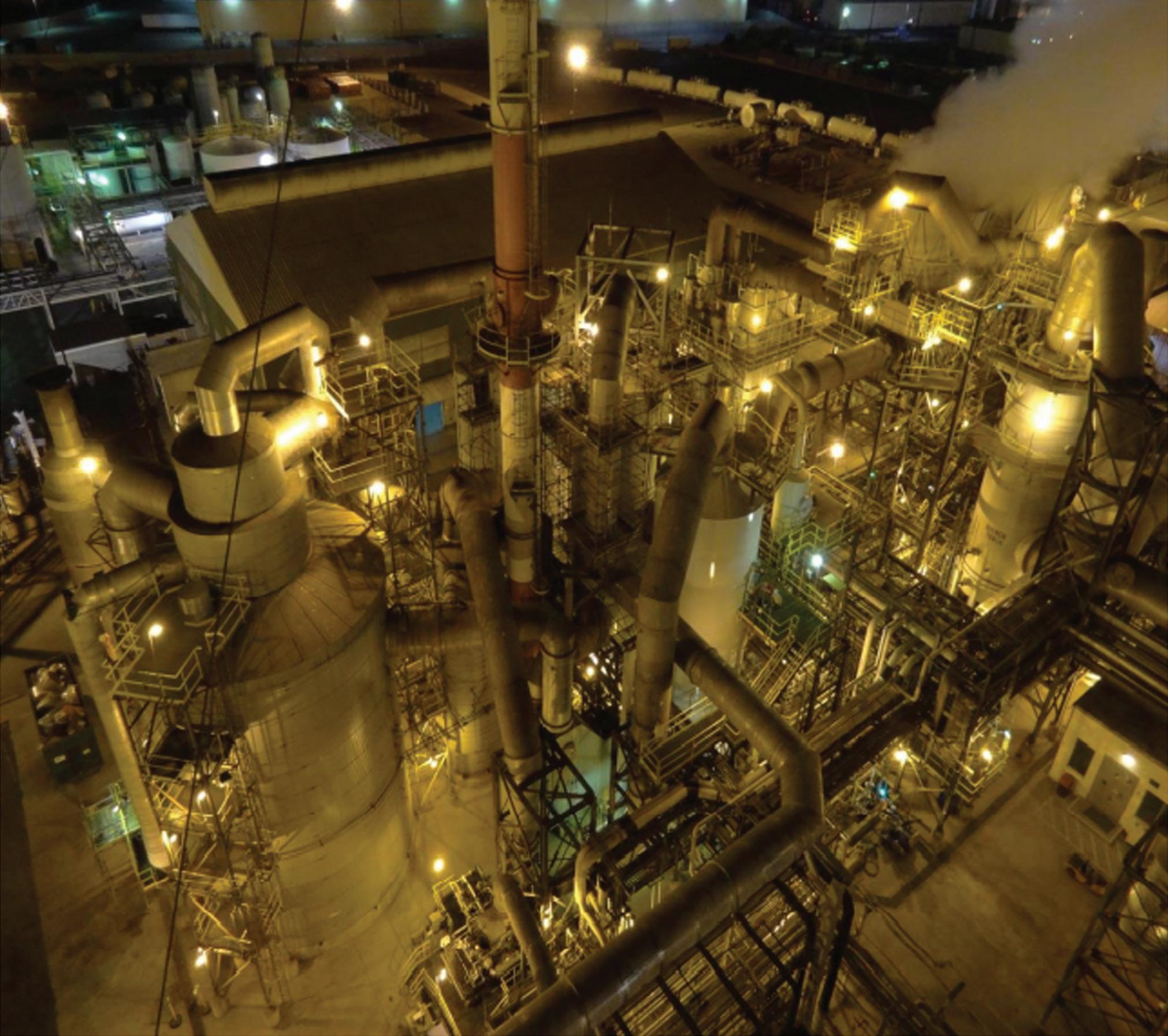
Ecoservices’ Dominguez sulfuric acid plant recently replaced its converter’s internal heat exchanger.
A new 55,000 lbs. heat exchanger made of 310SS is lowered into converter. Lifting the new heat exchanger.

Robust design just coming due
The reason so few internal exchanger replacements have been made so far is in part because they have served decades in the field already and are only just starting to wear.
Internal exchangers were conceived in large part to avoid disruptions caused by leaky bed one outlet ducts found in external exchangers. “This always problematic duct and the exchanger nozzle are the number one gas leak point in any acid plant and the cause of unplanned stops, scaffolding, and repairs. To eliminate that duct was a key reason why internal hot exchangers were invented,” explained Grant Harding, Technical Services Manager at Chemetics.
“External hot exchangers have significant mechanical stresses on them from ducting and differential thermal expansion between the shell and the tubes, along with the same corrosion effects as internal exchangers. Well designed, radial flow internal hot exchangers have been shown to last substantially longer than non-radial flow external hot exchangers, and to have lifespans identical to radial flow external hot exchangers,” Harding said.
The design and 304 SS material commonly used in internal heat exchangers are well suited for most applications, with typical corrosion rates of 0.001 inches per year or less, so 30-year-old installations in the harshest applications, such as with the Ecoservices plant, are just beginning to age-out. Chemetics has replaced only one other internal exchanger in its 40 plus year history, and it was also in high temperature sulfidation environment. “Most internal exchangers in the field are subjected to far less severe conditions,” said Huebsch. “In fact, some Chemetics internal hot exchangers are on track for a service life of 50 years or more.”

Repair, not replace
A recent industry shift in how to handle corroded converter equipment also explains why internal exchanger replacements have only recently begun.
“In the past, the exchanger was considered integral to the converter itself and would corrode somewhat uniformly with the converter passes. Converter performance as a whole, exchanger included, was considered the metric of overall converter health. But after several of these converters were replaced, it was reported that the converter passes were in relatively good condition, and the damage was mainly within the exchanger itself,” said Ron Eickelman, Lead Project Manager, Select Plant Services.
So began a shift in thinking to regard the internal exchanger as having its own separate life span and therefore independently replaceable. In the case of the Dominguez plant, the new philosophy made good economic sense too.
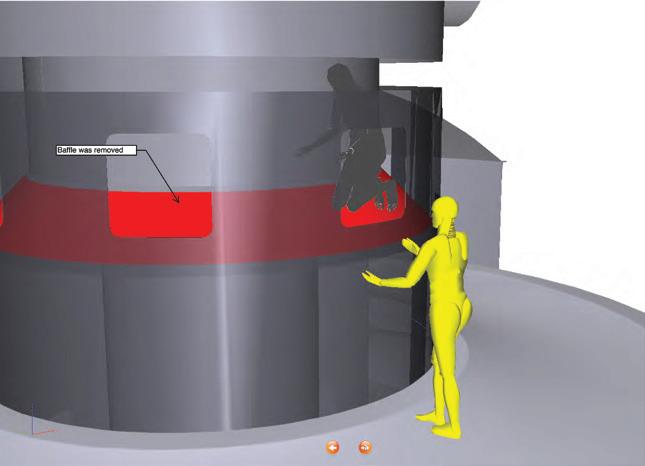
A virtual reality program furnished by Select Plant Services was used in the planning stage of the exchanger replacement. The planning team could don 3D goggles and virtually move throughout the converter/ exchanger sections.
A section of duct is removed.
Baffle was removed
Top of converter is lifted out. The new exchanger, designed and built by Chemetics, is lifted in.
New exchanger in place.
Baffles reinstalled.
The top of the converter reinstalled.
“A new convertor would have cost us $15M, whereas the exchanger was much lower, $3.1M,” said Floyd. “The rest of the convertor, the sections that see lower temperatures in the range of 800-900 F, is still in good shape.”
So Ecoservices’ converter was retrofitted with a new Chemetics radial flow internal exchanger constructed from more resistant 310 SS. To help offset the cost of the metals upgrade, the shell section of the new exchanger was modified and the internal connections simplified to reduce the amount of material needed.
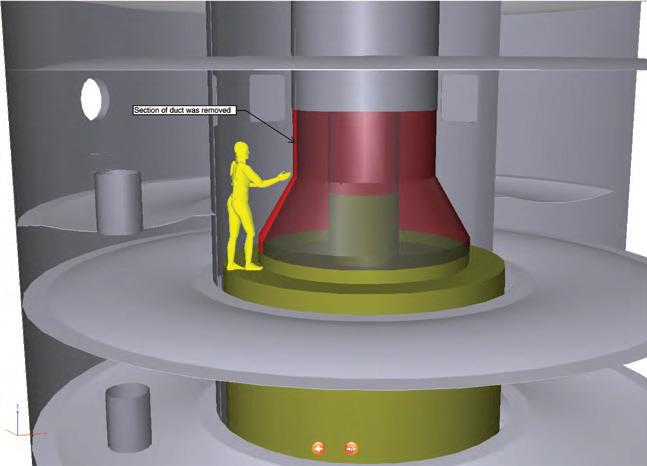
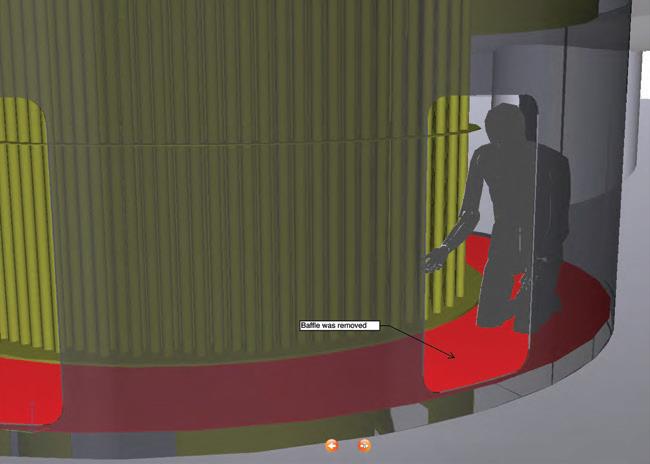
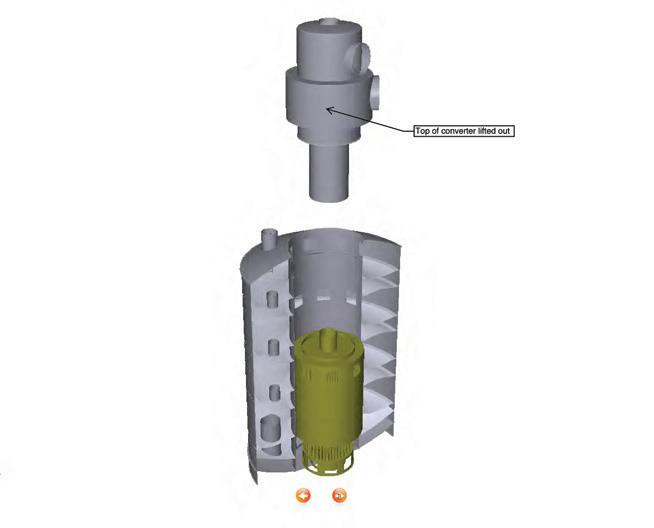
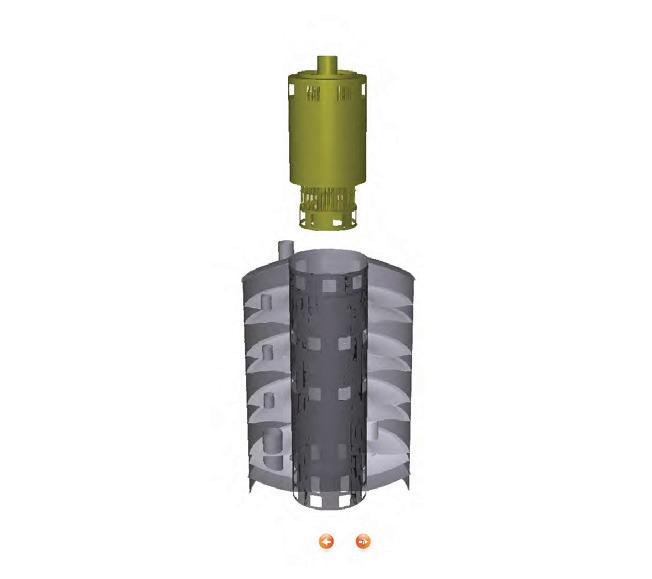
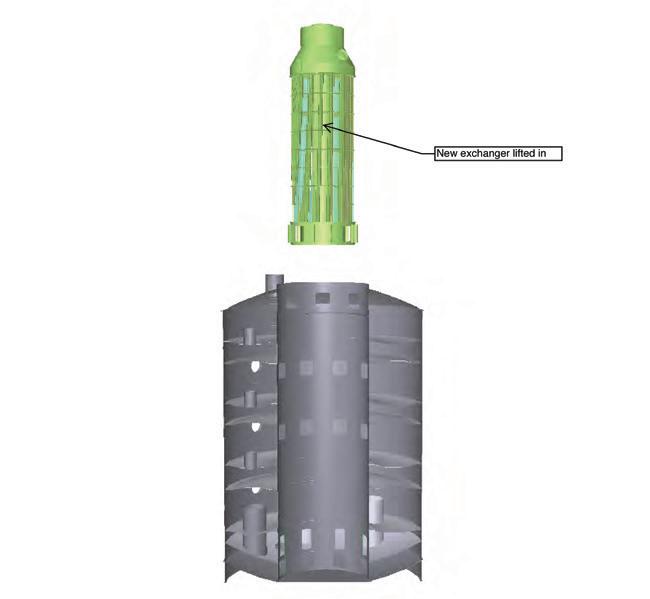
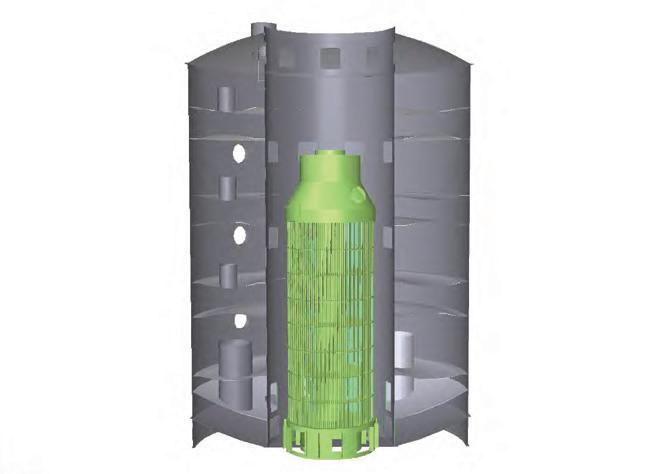
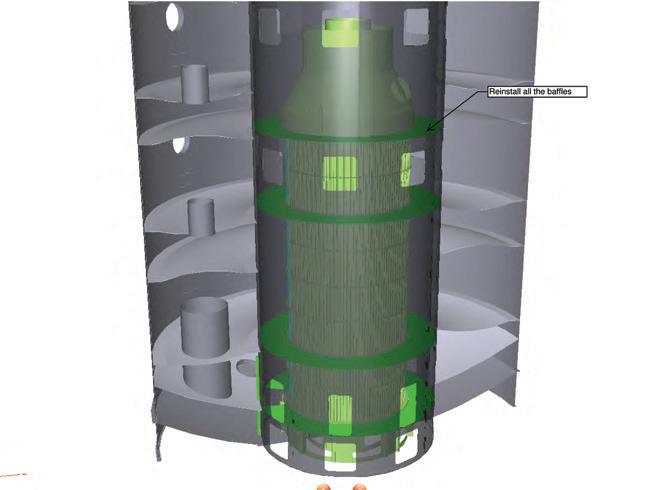


An inside job
With limited past experiences to draw on, many of the contractors were unfamiliar with working on internal exchangers. This elevated overall project difficulty to some extent, but the internal exchanger’s defining feature—integration inside the converter vessel—created the greatest challenges.
With no view to the inside of the converter, just evaluating the condition of the existing exchanger required an extra step. Initial testing had to be performed by simulations using process data. Visual inspection was performed later, but only after the results of the simulations justified shutting down and opening the vessel.
Additionally, without visibility, a lot of planning relied on drawings and required more detailed communication between project leads and contract workers.
“The virtual reality program provided by Select Plant Services was a tremendous planning tool,” said Jack Harris, President/ CEO for VIP International. “It’s one thing to look at the drawing and calculate the work and crawl space in such an intricate confined area. This program allowed our planning team to virtually move throughout the converter and exchanger after simulated sections were removed.”
Because exchanger and converter are so well integrated, disentangling the two also increased the project’s complexity. “Each task affected the next, so each had to be evaluated, planned, and cost together; and then executed in proper sequence,” said Eickelman. The required tasks included: • Remove the top of converter and disconnect four gas passes from the old exchanger. Ensure connection points remain in place for proper realignment when new exchanger is fitted. • Remove baffles while preserving required parts of the converter. • Lift the old exchanger out without the tubes breaking apart.
Because baffles are tightly fitted and not designed for replacing, removing them involved some imagination. “We used VR to model the space to make sure a person could maneuver where cuts were required,” said Eickelman. “We also took the time to come up with “Plan B” in case the real world didn’t agree with the VR world,” he said.
Regarding lifting the old exchanger, there was no external case to contain the load. Knowing the center tube was too weak to reliably handle the weight, the team designed a separate carrying system and installed it in time to keep the overall job on schedule.
Weighing prominently on the minds of team members was welding inside a confined space. “One of the biggest challenges was determining acceptable weld methods for tight, sometimes inaccessible spaces,” said Kyle Steinpress, Ecoservices’ Lead West Coast Project Engineer. Because of

Bottom of original heat exchanger with tubes breaking above baffle at top of picture. Top view of the newly installed exchanger.


new OSHA regulations regarding chromium welding vapors and elevated NOx readings, all internal welding had to be done on supplied air.
“The confined space entry was Immediately Dangerous to Life and Health (IDLH) due to high nitrogen dioxide NOx levels, as well as welding and cutting fumes” said Darwin Passman, Safety Director for VIP International. Each confined-space entry location presented its own unique challenges. Within each initial entry into the vessel, there were multiple secondary entry points to allow access to various areas and levels within the space.
The intricacy of the confined space entry coupled with very limited ventilation created some unique hazards. Breathing air compressor systems were connected in unison with breathing air bottle racks in the case of a power failure to the compressor system. According to Passman, who headed up the safety team responsible for the rescue, “this provided a secondary source of supplied air to the confined space entrants. All confined space entrants always wore full-face supplied air respirators with 5-minute escape air bottles on their person. An elaborate rescue plan was developed that involved things such as, the placement and installation of retrieval systems at the various entry points within the confined space. Safety entrants were strategically positioned at each entry point and with each work group inside the confined space.”
The safety entrant’s responsibility was to observe the workers, monitor the internal atmospheric conditions, and assist with rescue if needed. All confined space attendants, safety entrants, and supervisors carried radios for immediate communication purposes in the event of a rescue. A rescue box containing everything required to perform a rescue was located outside of the initial entry points. Each level of the vessel where the initial entry points were located were accessible by barrel ladder only. Therefore, a dedicated manlift was on standby at all times for lowering an incapacitated worker to ground level.
VIP performed all the confined space entry for internal cutting and welding; and had four crews working at eight different elevations. “The sequence of work was critical so that no one was working directly above anyone else,” Harris said. “We had to stagger the crews at different points around the circumference to make sure areas below remained clear.”
Difficult access also meant extra attention to weld preparation because it had to be done correctly the first time. “Cleaning and surface prep had to be emphasized because the weld quality was paramount, and inspection was complex because the entire job was done in a fresh air environment,” said Eickelman.

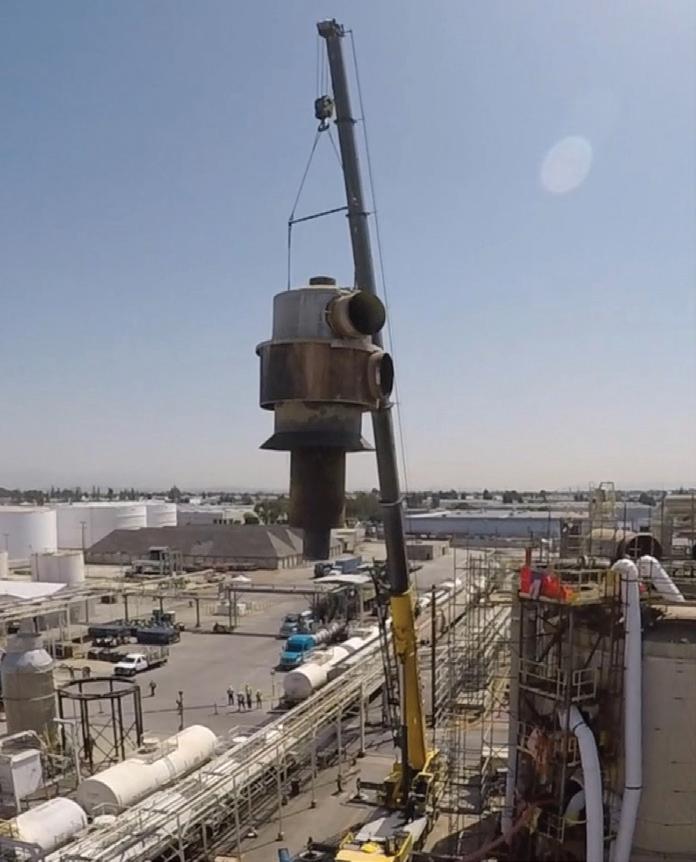
Converter top along with sections of center core are removed from converter. Since this equipment was reused, a stand was built to keep this section in a vertical position to reduce the chance of deflection. This also allowed for welding prep to be performed on the ground.
Other challenges
Common to any turnaround project was the pressure to stay on schedule. Plus the team was juggling three other major projects during the same shutdown period: a Chemetics (CIL) acid cooler replacement, a new quench tower roof, and an overhaul of the main gas blower turbine.
The turbine rebuild was located about 35 feet away from the converter. Both projects required crane lifts but there wasn’t enough room to operate two cranes. So, 90 percent of the turbine work was done offsite, then on-site crane lifts were strategically planned and communicated between the two projects.
There was contention for the single access road that was shared between the converter project and a railroad loading rack that remained in service during the outage. The solution was “planning, planning, and more planning,” said Eickelman. The plant rescheduled rail movements to minimize impacts, and the project was included in all communication. Two daily meetings ensured all parties were coordinated and any problems worked out before workers got to the field.
Planning, people & communication
To help manage all the activity, the team employed the principles of SMED, a project management tool used to reduce the amount of time it takes to change from running one process in an operation to running another. “We split the facility into two pieces for the SMED, the HHX side and QT side. Then optimized each schedule before stacking them to search for logistical interferences and personnel synergies,” said Steinpress. “We have been involved in SMED meetings before, but the planning this time was invaluable. Everyone was included in these meetings, from operators to plant management, so decisions were made on the spot,” said Harris. “Every contractor along with plant operators discussed in detail every task to be performed on each shift. We ironed out plan B in case we snagged on plan A and management was present to approve each step. The result was no down time discussing a plan or wait on a decision during the outage,” he said.
Despite the challenges, the project was successfully completed four days ahead of schedule. The project team credits the combination of meticulous planning, dedicated personnel, and frequent communication.
“A team of committed people, internal and external to Ecoservices, worked on planning this job in various capacities for over five months. In my opinion, this is what made it possible. Nothing was “discovered” during the job that we had not already discussed to some extent before the project started. We had no contractors waiting on stand-by for decisions to be made,” said Eickelman.
“Managing safety, schedules and budget are the key ingredients to a successful turnaround and this is a great example of what can come of excellent planning and execution. The overall turnaround on this project was planned and executed extremely well from start to completion,” added Daniel Tate, Turnaround Program Manager, Ecoservices.
Ecoservices’ Steinpress and Floyd noted workforce talent. “Top quality contractors enabled ahead of time completion,” Steinpress said, citing Bragg Crane, Brand Scaffold, Chemetics, Select Plant Services, Southwest Refractories, Thermopower, Total Western, and VIP International.
Huebsch of Chemetics noted how collaboration with the client contributed to their own project’s success. “Ecoservices was excellent to work with in all areas,” Huebsch said. “They made informed, practical decisions throughout the project.”
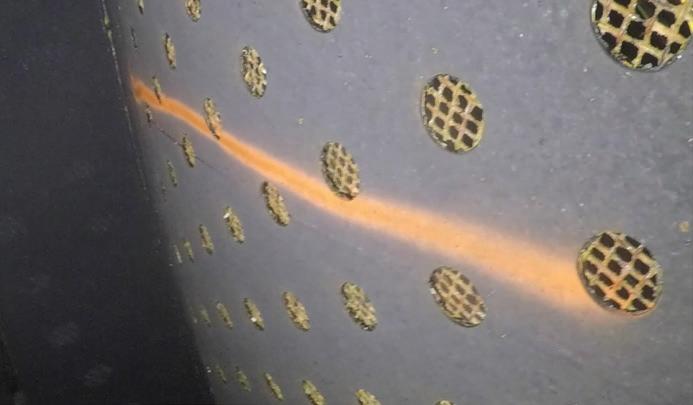
Repairs were able to be made to the converter catalyst support plates during the project, while remaining within schedule and budget.
Ahead of schedule
After five months of planning the turnaround projects at Ecoservice’s Dominguez plant, a 26-day schedule was created. Work began on April 18, 2022 but finished in only 22 days. Here’s how the team shaved four days off their schedule: • Shutdown optimized: The plant was brought down in a way that allowed the team to get a head start on several tasks sooner than anticipated. • Demolition streamlined: Once the converter was opened, contractor VIP devised a way to remove old baffles in larger sections and remove the old exchanger with its surrounding shell in one lift instead of two. • Concurrent welding & screening: The project team assumed screening catalyst during the outage would contaminate the atmosphere making welding impossible. That was not the case, due to VIP’s dust-free catalyst handling system, so screening and loading were completed while the welding continued. • Other schedule allowances not needed: The schedule allowed for contingencies that did not materialize. • Added Bonus: Unscheduled discovery repairs were made to the converter once in the confined space.
Moving forward
With its new internal heat exchanger fashioned from upgraded stainless, it will take another three decades, at least, before an encore replacement is needed. Chemetics estimates 30-50 plus years of service life. In that much time, it’s likely the converter would age out and it would be the exchanger that is reused. q








